Hi Everyone,
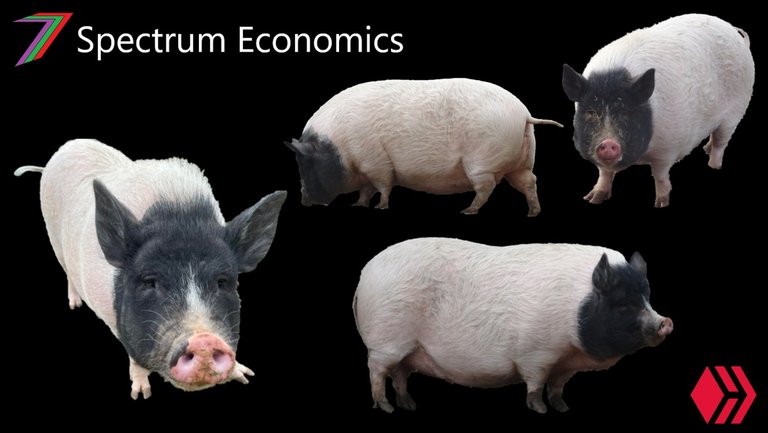
There is a pig named Hamlet living in a section of my back garden. Hamlet has been living there for almost three years. She lives with her best friend, Lily, who is a goat. The two of them get along incredibly well. They live in an approximately 200-square-metre area. They have their own little houses to protect them from the elements. They are supplied with hay to use as bedding and the occasional snack. They are fed twice a day with their own special muesli. Pet Pig for Hamlet and Capri Floc 2 for Lily.
Over the past few years, I have spent considerable time with both Hamlet and Lily. They are good company. Lily loves to run around, play with toys such as a football, and headbutt everything. Hamlet is less playful, but does join in on occasions. Overall, they are happy and have a pretty good life. The biggest difference is for Hamlet. Pigs might be the most abused species in the world (see Land of Hope and Glory for many examples of abuse that they and other animals experience).
The Abused
Farm pigs are kept in vastly overcrowded sheds. Some are confined to areas so small they cannot even stand. They are forced to stand or lie on metal or concrete flooring, offering no comfort (Business Insider). Some are forced to lie in their own faeces and urine. Their piglets are born into this filth. Many suffer from disease (Animal Ethnics). This matters little to the farms. As long as the piglet can reach a size or maturity suitable for slaughter, which is around six to seven months (Accidental Small Holder).
The slaughter is not painless. In some countries, they are boiled alive (Totally Vegan Buzz). In other countries, they are gassed; this also causes incredible pain before death (Viva). In other countries, they are stunned before their throats are slit (We Animals Media).
We could argue that chickens are abused in a similar way, but what makes it worse for pigs is their intelligence, both cognitive and emotional. They can experience trauma prior to being slaughtered. They become aware during transportation to slaughterhouses (CBC). At the slaughterhouse, they become terrified when they hear or even just sense the suffering of the pigs that have gone before them. They feel empathy for them, and they fear for themselves, knowing they are going to share the same fate (Mercy for Animals).
Not all cultures eat pigs. Both Judaism and Islam forbid the consumption of pig flesh. According to the Torah and Old Testament, Leviticus Chapter 11, pigs are not meant to be eaten. This is because they do not chew the cud. Therefore, they are considered unclean (Mechon Mamre).
Arguably, Christians should also observe this practice. However, the new covenant of Jesus has been used as an excuse to abandon certain practices. This has most likely been done to expand the reach of Christianity.
According to the Quran, God prohibits the eating of pigs. Pig flesh is considered impure (Islam Religion). The reason religions oppose the consumption of pig flesh appears to relate to spiritual impurity rather than physical impurity. The religious texts do not explain exactly why this is the case.
Getting to Know a Pig

Hamlet was not bred to be slaughtered. She was bred to be a pet. She was bred to be smaller than farm pigs. She has a shorter spine and shorter legs. As a female, she most likely would have been used for breeding other small pigs. She would not have a great life in store for her, but a considerably better fate than the farm pigs. An arguably more noble approach would have been to adopt and save a farm pig that would have gone to the slaughterhouse. This would have been significantly more difficult considering the needs of these pigs. They are much bigger and stronger. We did not have an appropriate area with reinforced fencing or shelter to make this work.
The more time I spend with Hamlet, the more I realise how remarkable she is. She is incredibly sophisticated and social. She can make a wide variety of different sounds; deep grunts, high-pitched squeals, barking, oinks at varying pitches, laughing like sounds, and it even sounds like she says ‘no’ sometimes. She can string together a variety of different sounds that are almost like sentences. Her sounds may not be considered language, but she can effectively use them as a form of basic communication. For example, high-pitched squeals to indicate distress, deeper grunts to indicate satisfaction, and barks to indicate excitement and playfulness.
A common myth is that pigs are dirty animals. The opposite is generally true. Hamlet is incredibly clean. She has areas, she has dedicated to defecating and urinating in. These areas are located a distance from her house, water, and eating areas. Lily is not as particular. Hamlet will remove the hay that has goat’s droppings on from her house. If Hamlet becomes muddy, she uses the hay to clean herself. She never remains dirty for long. Typically, pigs on farms are dirty because they have no choice.
Just Like Us
The most noticeable thing about Hamlet is how similar she is to us. From a distance, pigs look nothing like humans. Their body shape and proportions are very different from ours. They have four legs and trotters as feet. Facially, they are very different. They have much bigger ears, a large snout, and very widely separated eyes. The similarities are in some of the details. For example, the eyes. Pig eyes look very similar to human eyes. The shape and size are very similar to ours. A significant amount of the white of the eye is visible. Most animals have large irises; the whites of their eyes are rarely visible. I can see the whites in Hamlet’s eyes at all times. This can be seen in photographs of almost any pig.
Several papers have been written about the similarities between pigs and humans eyes. The identification of these similarities has led to pig eyes being used as a model to study human eyes (Middleton, S., 2010).
The skin on a pig’s body is very similar to our own. It is sparsely covered in hair. It has a very similar texture to human skin. It has similar vulnerabilities, such as being prone to sunburn. In the summer, on sunny days, Hamlet would be sunburned. We had to buy a special sunblock for her. The hair on her body did not offer her enough protection from the sun, and she did not want to remain in her house. She likes to sunbathe. Similar to us, we sunbath despite the risk of sunburn.
Like with the pig eyes, pig skin is being used as a model for human skin. It is used as a model for wound healing, transdermal delivery (i.e., injecting substances through the skin), dermal toxicology (e.g., chemical reactions on the skin), radiation, and ultraviolet radiation effects (Summerfield, A. et al, 2014). Pig skin is also used to test tattoo ink as well as cosmetics (Better Tattooing and Peta).
Beyond just external similarities, pigs are very similar internally to humans. Pig organs, in both size and placement, are very similar to human organs. A pig weighing 60 kg has a body that very closely resembles that of a human’s (Australian Academy of Science). Pigs are so similar to humans internally, that organs have been transplanted from genetically modified pigs into humans. This has been done with a heart and kidneys (ABC News and Scientific America).
Even in taste and flavour, human flesh has been described as very similar to pig flesh. A robot programmed to identify different flavours identified a human hand as bacon (Wired). German cannibal Armin Meiwes claimed human flesh tasted like pork but with a stronger, slightly bitter taste. In the 1920s, author and journalist William Seabrook encountered cannibal tribes in West Africa. He claimed from his experience that human flesh tasted a bit like veal or pork (Smithsonian Magazine). Human flesh has also been given the name ‘longpig’. It is believed that cannibal cultures from the Pacific Islands considered human flesh to look similar to pork when it was prepared (grammarist).
Evolution or Something Else
Despite the amazing similarities between pigs and humans, they are considered relatively far apart in terms of evolution compared with other mammals. Figure 1 contains an evolutionary tree for mammals.
Figure 1: Evolutionary Tree for Mammals
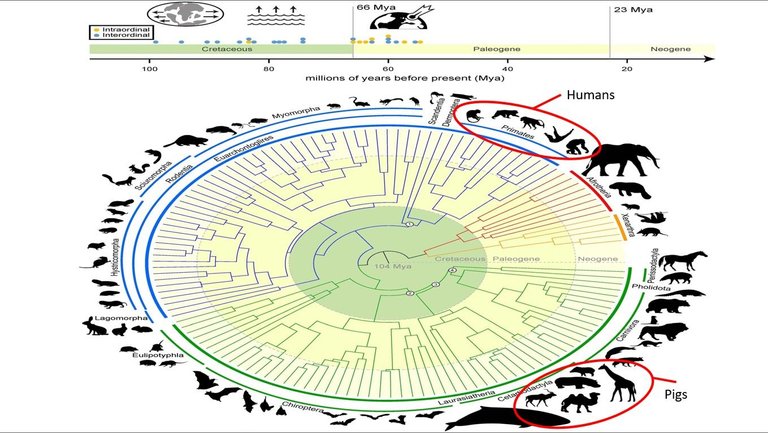
Source: Sci Tech Daily
According to mainstream evolutionary theory, humans are classified as primates. Whereas pigs are classified under the cetartiodactyla group. They are supposedly separated by over 100 million years of evolution. Pigs can be classified further as suidae. The evolutionary tree looks as follows in Figure 2.
Figure 2: Evolutionary Tree for Pigs

Source: Untamed Science
In theory, humans should have more in common with mice than pigs, since we supposedly shared a common ancestor with mice just 70 million years ago. (Australian Academy of Science). Some scientists have attempted to explain the similarities between pigs and humans using a theory called convergence evolution. It is claimed that a common environment may cause different species to evolve in a similar manner. It seems very strange that pigs would evolve in some aspects almost identically to humans and in others very differently.
DNA tests indicate that humans and pigs share approximately 98% of the same DNA (ABC Science). Only chimpanzees, bonobos, and gorillas share more common DNA with humans. Whereas mice only share about 85% of the same DNA with us, and cows, also in the cetartiodactyla group, only 80%. It appears there are a few problems with conventional evolutionary theory in regards to explaining the similarities between humans and pigs.

Source: Image Creator from Microsoft Designer
There is an alternative theory; this is based on the hybrid hypothesis. Geneticist Eugene McCarthy believes humans are a hybrid cross between chimpanzees and pigs. Humans remain more closely related to chimpanzees than pigs because of backcross breeding. He believes the first 50/50 hybrid crossed back with a chimpanzee to create a hybrid genetically closer to a chimpanzee while maintaining some of the characteristics of the pig.
Some Comparisons Between Chimpanzees, Humans, and Pigs

He elaborates on his theory by explaining some of the traits humans share with pigs and not chimpanzees. These include eyes, nose, skin, aspects of the ears, backside and posture, ratio of arm to leg length, and ability to cool the brain. The arguments he makes are quite convincing. Many of the differences between humans and chimpanzees cannot be reasonably explained as a product of evolution as a form of adaptation to the environment. Figures 3 and 4 contain lists of human traits not seen in other primates.
Figure 3: Traits Not Seen in Other Primates
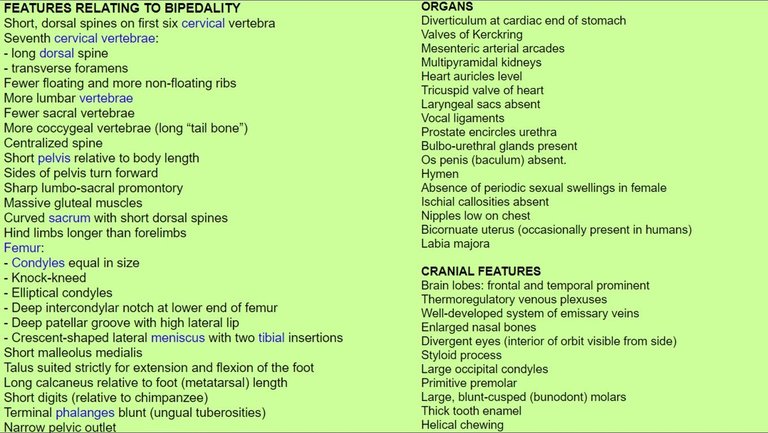
Figure 4: Traits Not Seen in Other Primates (Continued)
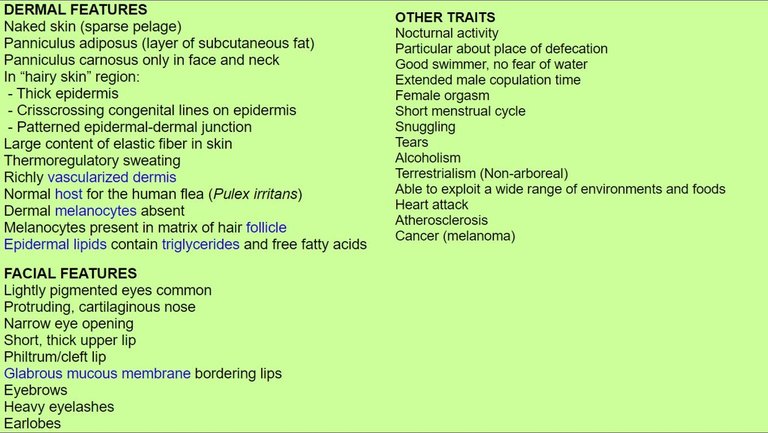
Source: Eugene McCarthy
Eugene McCarthy's theory explains these differences far more convincingly than mainstream evolution theory. However, his theory has a huge problem. There is no evidence to suggest that it is possible for chimpanzees and pigs to crossbreed. The evidence they cannot, is far more compelling. There is no evidence that such large leaps in cross breeding have taken place between any substantially different species (Observation Deck).
Chimpanzee, Pig, Human Mystery
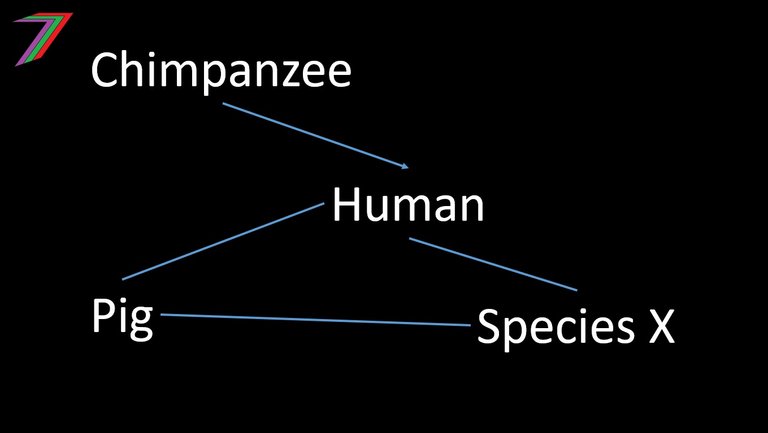
As it stands, in its entirety, McCarthy’s theory is most likely incorrect. However, it does strongly argue and imply a closer genetic relationship with pigs. It also shows the mainstream evolutionary theory of humans is incorrect. It might be worth considering how chimpanzee and pig DNA could be combined outside of breeding.
It is also possible that the connection between humans and pigs is the other way around. Instead of humans being an evolved hybrid from pigs, pigs might have come from humans. Any such theories are an incredible leap. Somehow, human DNA would have to be combined with the DNA of the ancestor of modern-day pigs.
Cross breeding between the pig’s ancestor and humans would have been impossible. Therefore, for pigs to have human DNA, it would have to have been artificially introduced. This would have happened thousands of years ago. According to mainstream history, this would have been long before modern day humans had any such capability. However, intelligence existed thousands of years ago. There is evidence of that in the construction of magnificent structures such as the pyramids of Giza, Egypt. We do not know if these structures were based on human intelligence or that of another species.
The biggest problem is the lack of physical evidence. It is unlikely any will be revealed to the world; as such discoveries are not in the interests of world powers (i.e., the establishment/s). Hence, they will likely always remain theories, which will receive little credence because of the emphasis on the lack of physical evidence.
Conclusion

Over the past three years, I have learnt so much more about pigs. Hamlet has been my teacher and inspiration. Just spending time with her is a learning experience. In spite of the broadly obvious differences, she has shown me how alike we are. She inspires me to dig deeper to learn more about pigs. The aspects of abuse are relatively easy to find. There are many great documentaries, such as Pignorant, Dominion, and Hogwood.
We need to dig a little further to find out more about the close connection between humans and pigs. It is very clear that humans and pigs are very closely connected, both genetically and spiritually. The true cause of this connection is unclear. We will probably never fully understand what it is.
My New Book, Sapien Loop

I have published an ebook on Amazon; it is titled ‘Sapien Loop: End of an Era’. The book is fiction. I do not normally write fiction. However, I felt it was appropriate considering what is happening in the world today. Freedom is the most important thing we have, but we are gradually losing it. I have covered this in many of my posts.
In the story, most citizens do not understand the concept of freedom because they have never really experienced it. In essence, the story is about an alien world that might represent our not-so-distant future. There are many other elements to the story that are an abstract and exaggerated version of our reality. I believe this book to be an important read, and I believe it has the potential to change the way you think.
Brief Summary of Sapien Lopp
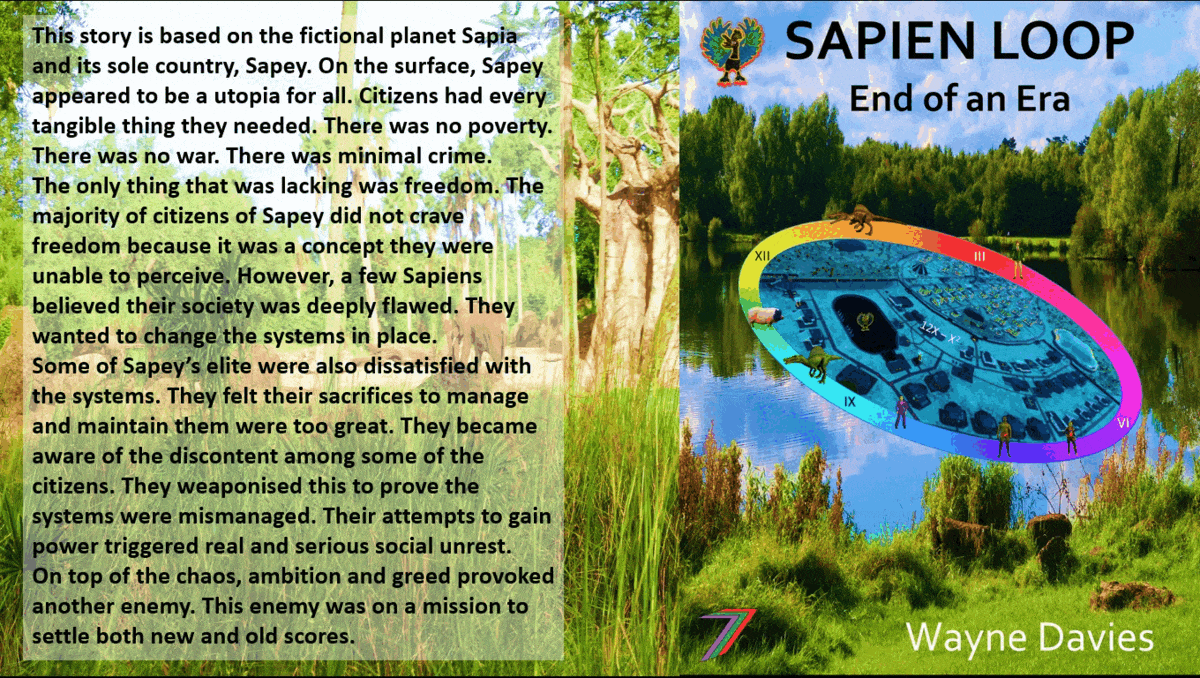
This story is based on the fictional planet Sapia and its sole country, Sapey. Sapey is portrayed as a form of utopia for all its citizens. No poverty. No war. Almost no crime. Opportunities for all.
This was enough for most citizens, but not all. In one of the small regions, some of the citizens had become discontent. They felt something important was missing in their lives. Their discontent did not go unnoticed. Some of the Sapey elite wanted to weaponise this discontent to gain more power. This created more chaos than they anticipated. This led to further widespread social unrest.
On top of the chaos, ambition and greed provoked another enemy. This enemy was on a mission to settle both new and old scores.
If you want to buy a copy of the book, below are links to the relevant Amazon websites for each country it is available in. The book is priced at approximately US$5.08.
- Amazon USA
- Amazon UK
- Amazon Germany
- Amazon France
- Amazon Spain
- Amazon Italy
- Amazon Netherlands
- Amazon Japan
- Amazon Brazil
- Amazon Canada
- Amazon Mexico
- Amazon Australia
- Amazon India
I am also running monthly contests where participants are required to answer questions based on the book. The prize is 30 Hive Power plus upvotes for the first twelve entries. You can recover the cost of the book with just one win.
Hive: Future of Social Media
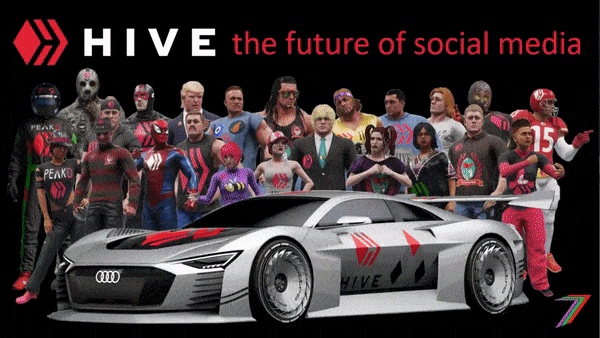
Spectrumecons on the Hive blockchain

Well this is something...
Quite a tragic and gory picture you painted there for the pig in farms.
Although any kind of abuse for any species is tragic and gory.
Hamlet looks happy though, so I guess that's good.
The pig Kidney transplant was later unsuccessful though as the patient died recently.
At least he lived with it for over a month so there's some hope for later scientific breakthroughs...
Lovely post by the way, very informative!!
!PIMP
You must be killin' it out here!
@seki1 just slapped you with 1.000 PIMP, @spectrumecons.
You earned 1.000 PIMP for the strong hand.
They're getting a workout and slapped 1/1 possible people today.
Read about some PIMP Shit or Look for the PIMP District
In terms of organs, pigs are a closer match to humans than chimpanzees. This is very interesting considering chimps are our closest relatives based on DNA and proposed evolution theory.
Oh well, sometimes some things just be like that😂😂
Definitely love your article with plenty of sources inside.
You explained that there are several similarities between pigs and humans. I guess that's probably the reason why it's possible to transplant a pig's kidney to a human.
Guess we'll see more clinical trials in the near future.
Your pig looks really cute by the way!
It's certain similarities that are amazing. A coincidence seems unlikely.
I definitely agree!
Your pigs are cute - I grew up on a pig farm - Loveley livestock - Much better than the Chickens who constantly run around and make trouble.
Hamlet is sweet natured. She can also be quite sensitive as well.
Hmmm... Hamlet
This is very educational. I have heard about how pig organs were very similar to humans, but I didn't know we've already transplanted them. Checking online it seems to be very recent so that is huge.
The transplants are a fairly recent development, but scientist have been looking into the possibility for a very long time. More effort is put into how it can be done than how it is even possible in the first place.
There is a video on Odysee titled 'The Truth about Pigs Are Humans - Human Meat Markets, Tainting Ancient and Modern Civilizations' that covers many of the points I have made in this post, but from a slightly different perspective. It does drift a little more along the lines of conspiracy theory, but it is worth a watch.